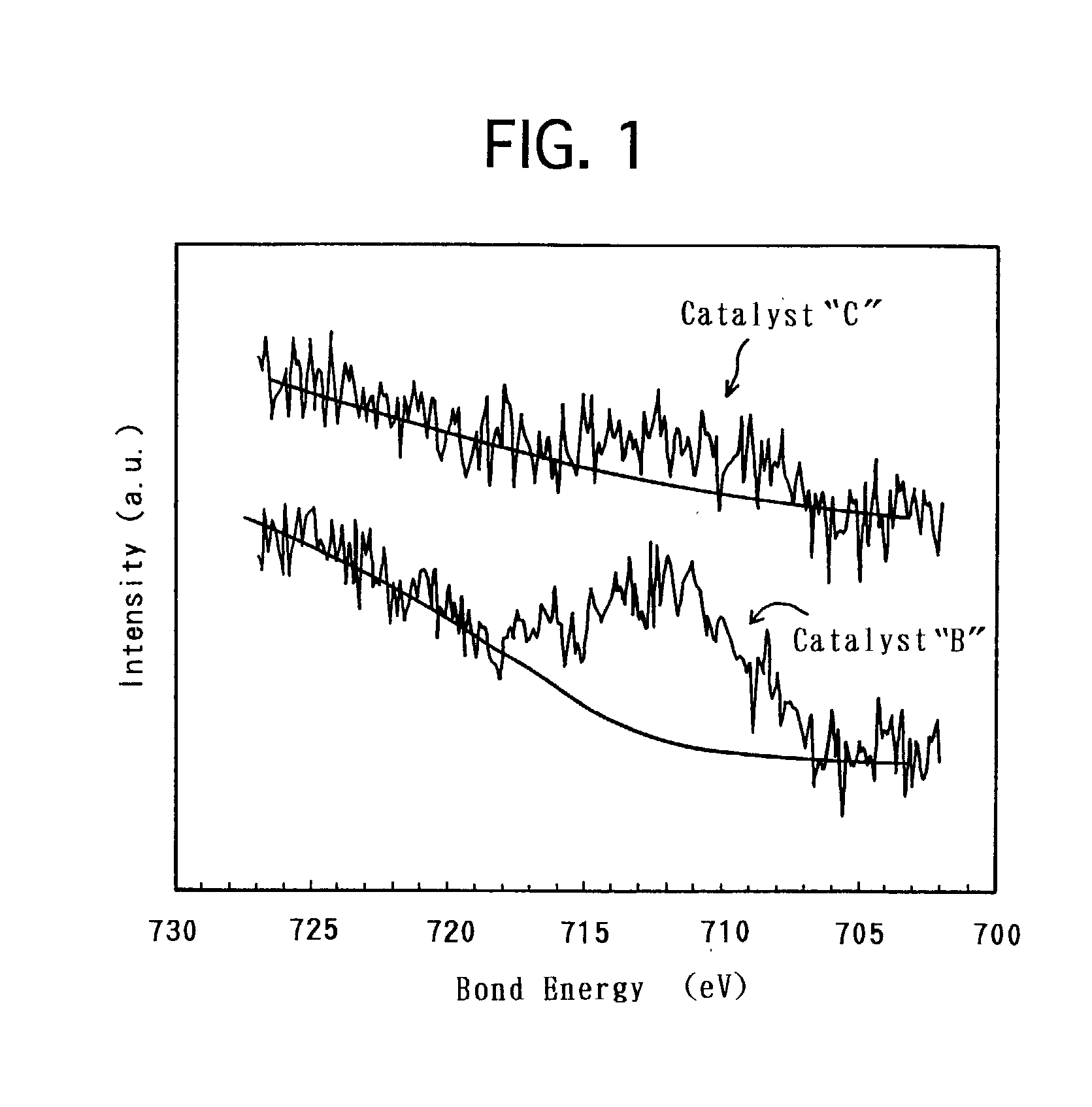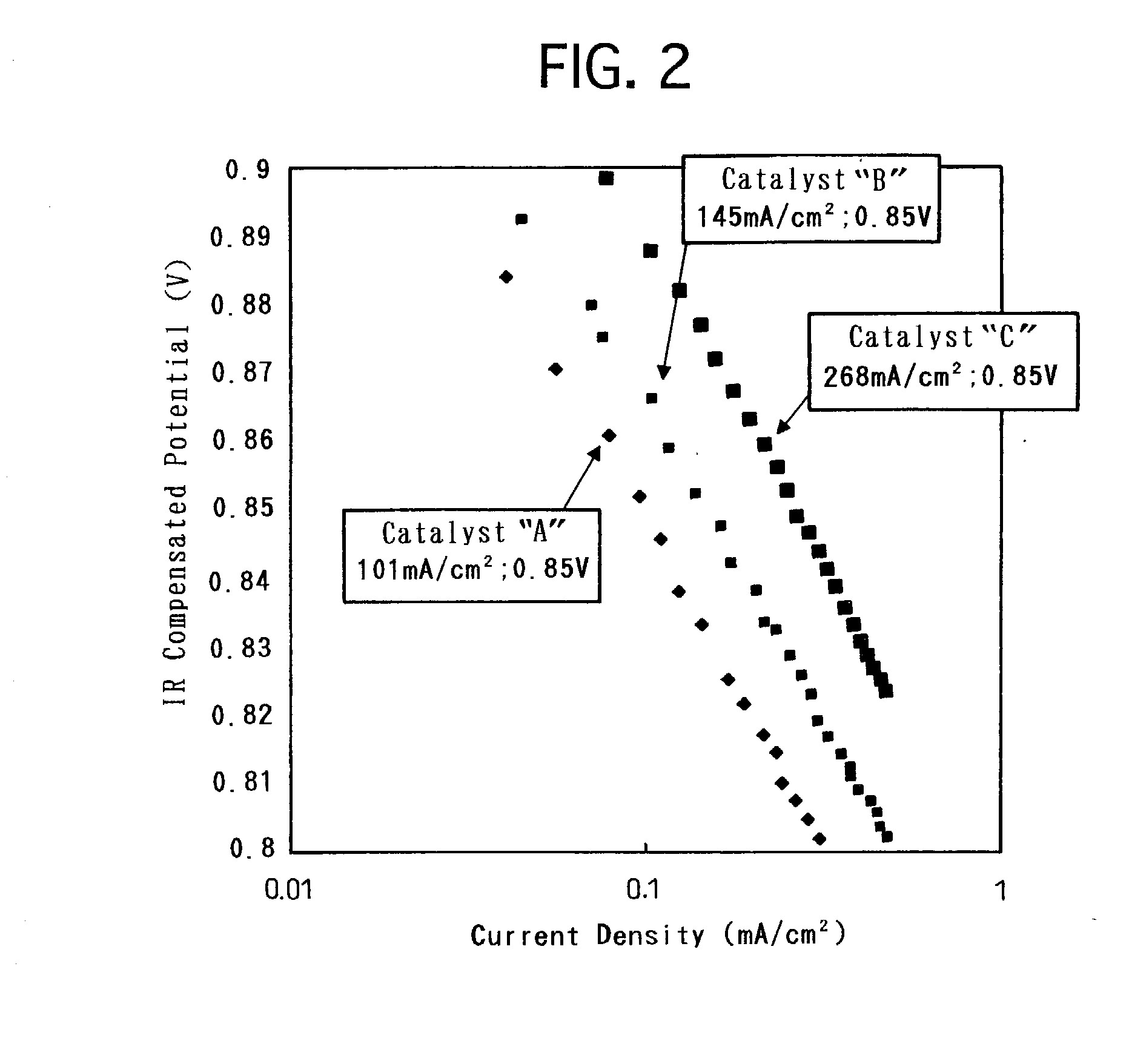Electrode catalyst for fuel cell and process for producing the same
- Summary
- Abstract
- Description
- Claims
- Application Information
AI Technical Summary
Benefits of technology
Problems solved by technology
Method used
Image
Examples
Embodiment Construction
[0033] Based on the above-described modes of embodiment, a variety of electrode catalysts were produced. Then, solid polymer-type fuel cells were made by using the produced respective electrode catalysts, and were assessed for the battery characteristics. Hereinafter, the present specification describes on the production of the electrode catalysts, the preparation of the solid polymer-type fuel cells and the assessment of the battery characteristics.
Production of Electrode Catalysts
[0034] In order to produce an electrode catalyst, Fe was used as the base metal, and carbon black was used as the conductive support. First, 1.5 g of hexahydroxyplatinate was dispersed in 50 mL of water in a reaction container, and 100 mL of a sulfurous acid aqueous solution was further added to the water. The sulfurous acid aqueous solution had a concentration of 6% by weight. The mixture dispersion was stirred for 1 hour. Thereafter, the reaction container was immersed in an oil bath to remove the remai...
PUM
| Property | Measurement | Unit |
|---|---|---|
| Fraction | aaaaa | aaaaa |
| Fraction | aaaaa | aaaaa |
| Fraction | aaaaa | aaaaa |
Abstract
Description
Claims
Application Information
 Login to View More
Login to View More - R&D
- Intellectual Property
- Life Sciences
- Materials
- Tech Scout
- Unparalleled Data Quality
- Higher Quality Content
- 60% Fewer Hallucinations
Browse by: Latest US Patents, China's latest patents, Technical Efficacy Thesaurus, Application Domain, Technology Topic, Popular Technical Reports.
© 2025 PatSnap. All rights reserved.Legal|Privacy policy|Modern Slavery Act Transparency Statement|Sitemap|About US| Contact US: help@patsnap.com


